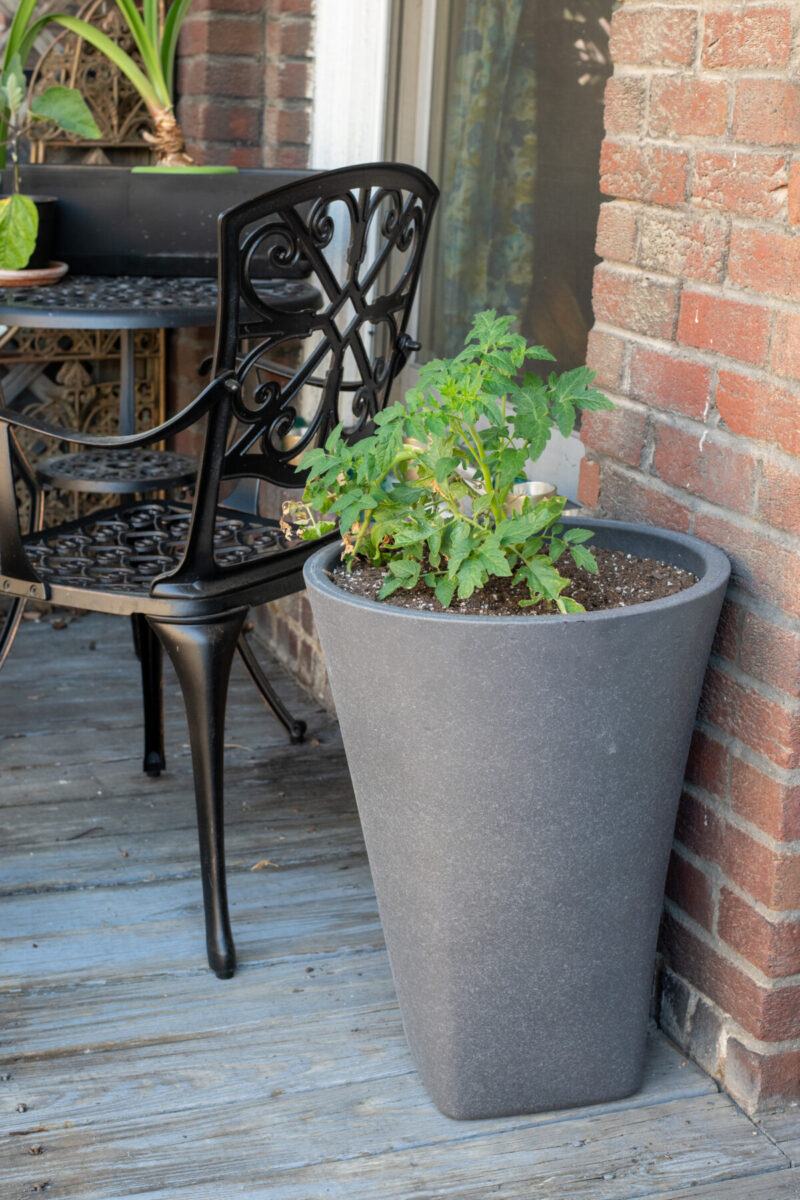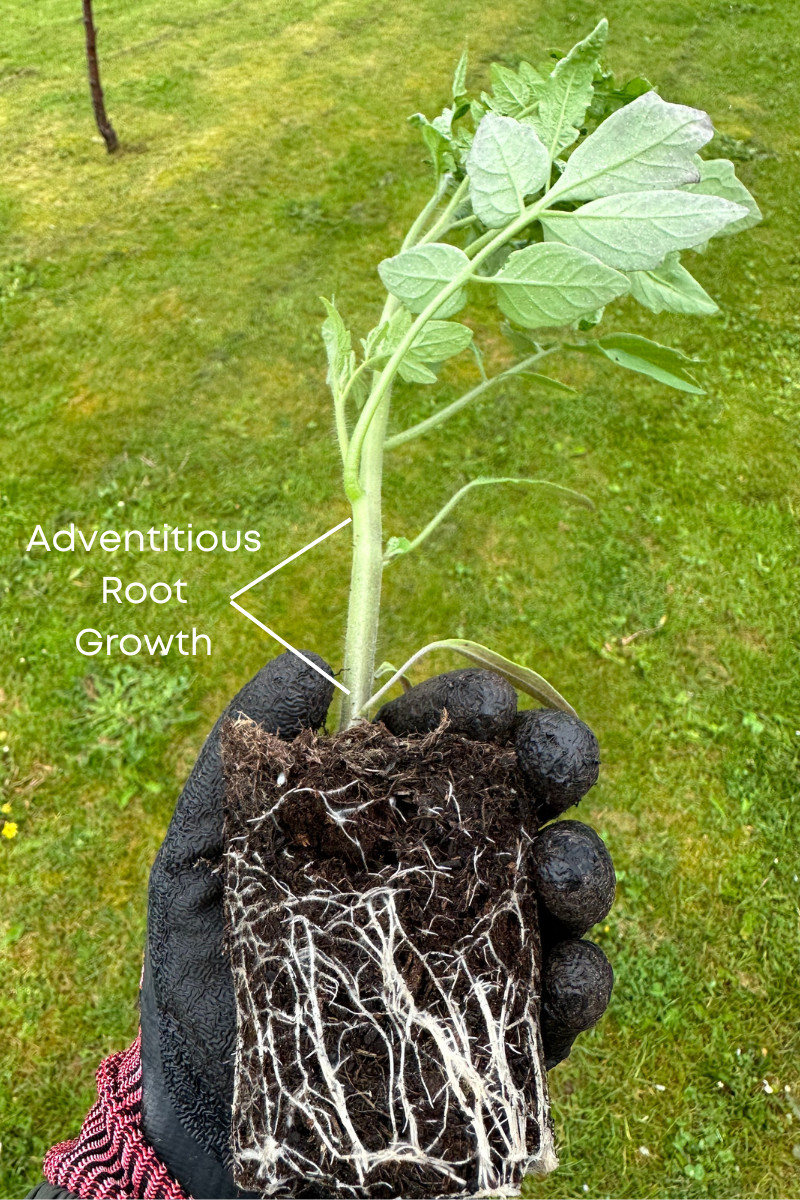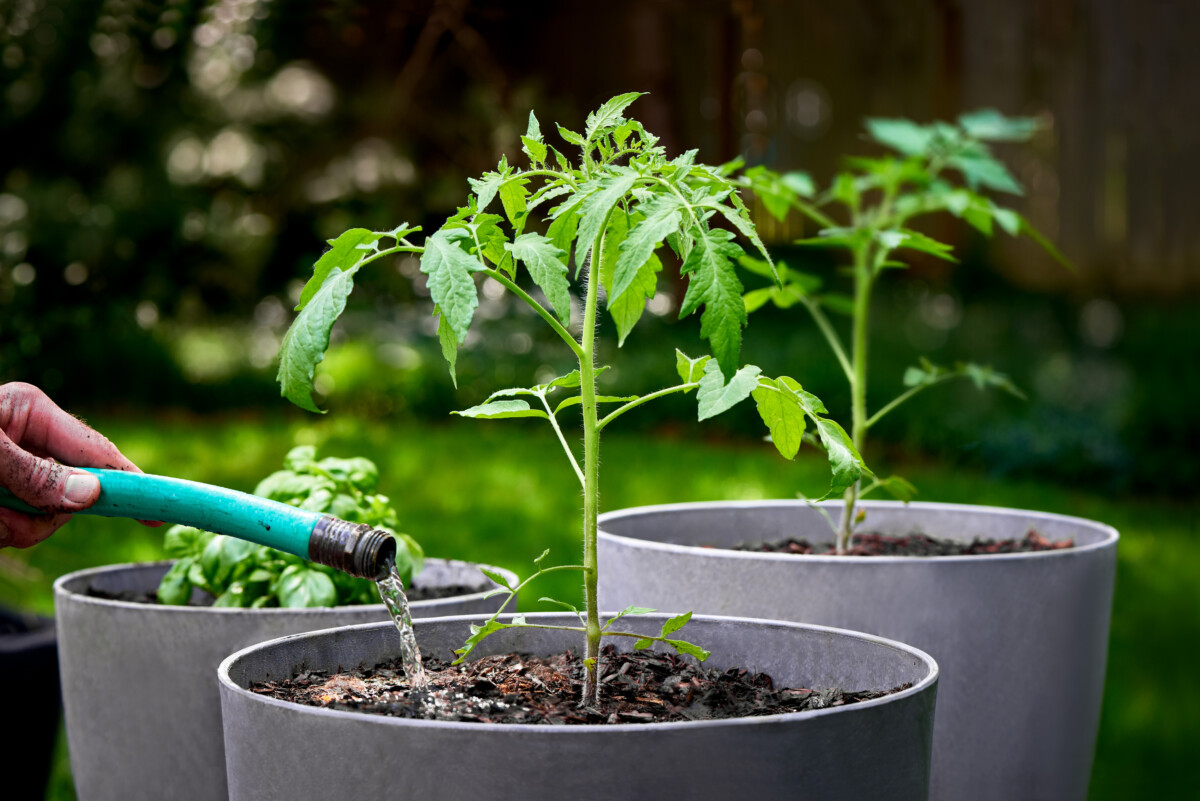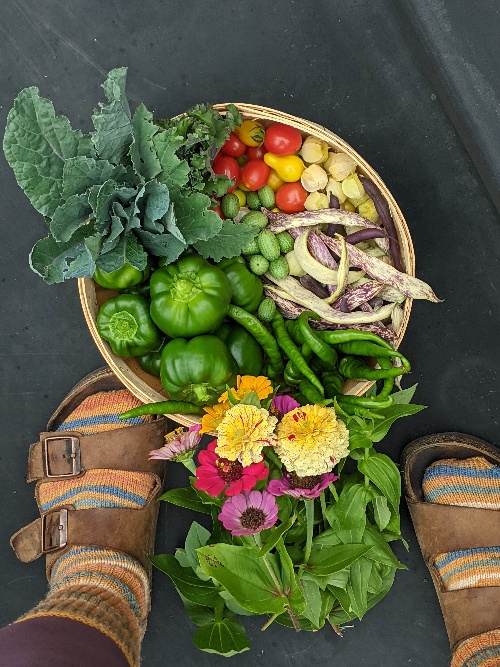
Growing tomatoes in pots is a great way to enjoy them even if you’re short on garden space. Patio tomatoes, growing in containers, whatever you want to call it, there’s an art to getting the most out of potted tomatoes.
Container-grown tomatoes face different challenges than ones grown directly in the soil. So, this season, if you’re hoping for more than a handful of cherry tomatoes or the occasional slicer from those pots out on the back deck, three things will make all the difference, but you need to do them now, at the start of the growing season.
Learning to Grow Without Land
I’ve been gardening now for over thirty years. I started when I was a kid, working alongside my dad in his organic garden on our off-grid homestead. As an adult, I’ve had a garden, no matter where I lived, even if it was no more than a little 4’x4’ raised bed. But by far, the biggest gardening challenge I’ve ever had was when I spent four years living in a second-story apartment downtown.
I didn’t even have a patch of grass, let alone a garden.
But I did have a little balcony, and let me tell you, I maximized every inch of that thing to grow vegetables and flowers.

In the four years I lived in that apartment, I learned more about growing tomatoes (and gardening in general) than I had in my previous decades growing in the dirt. I realized within one season that there are huge fundamental differences when growing tomatoes in containers. If you don’t get those right, you’re going to have a pitiful harvest, if not a dead plant.
Here are the three most important things I learned growing bushels of tomatoes in containers.
Is Your Planter Big Enough?
This is by far the one thing most gardeners get wrong. Whether it’s because they have a cute planter they want to use or they don’t realize how large tomato root systems are, nearly everyone is growing tomatoes in a container that is too small.
Tomatoes will only grow and put out fruit in proportion to their root system.
What this means is if you want big yields above ground, then you need to have a generous root system to support it beneath the soil. That isn’t possible when you’re growing tomatoes in little one or two-gallon pots.
These ones are a great size and look nice on your patio or porch. They come in different colors and have a drainage hole. Plus, because they’re resin, they’re much more durable than pottery planters, which can crack in extremely cold weather. Buy them once, and you never have to buy them again.
Generally, I don’t grow tomatoes in a pot smaller than 18”W x 18”H x 18”D. That works out to a little under ten gallons.
If you’re worried about space, then take a cue from my balcony tomatoes and go for slimmer but deeper (taller) planters that have a smaller footprint. Think of the planters you see on either side of a door. These are great for tomatoes, as the roots can really stretch out.
Even after moving out of my apartment, I still grow a tomato in this planter every year. It’s 12”x12”x24”.

Here are a few good options if you want something with a smaller footprint.
Growing tomatoes in a larger pot ensures the plant has adequate room for a big, healthy root system and helps to insulate the plant from drying out too quickly, which is always a problem when container gardening.
If you grow in anything smaller, the plant quickly becomes root-bound which means a smaller yield overall.
In tandem with growing in a larger pot, I highly recommend using mycorrhizae when you plant your tomato. These helpful little fungi will bond to the roots, making for a much larger root system giving you extra draught protection. They also break down nutrients in the soil, making them readily available for the plant. (This is the mycorrhizae I use.)
Always Bury Your Tomatoes
Now that you’ve got the perfect size planter ready to go and you’re going to give that mycorrhiza you keep hearing about a try; it’s time to plant your patio tomato seedlings.
This is a great tip whether you’re growing tomatoes in containers or directly in the ground – bury at least half of your tomato seedling below the ground when you plant it. You can bury up to two-thirds of the plant.
Tomatoes have special cells called parenchyma cells that hang out all along the stem, just below the top layer of skin. They’re ready to be called into action to serve whatever the plant needs. For instance, say you’re growing your tomatoes in an area that’s a bit shady. These parenchyma cells will grow into more leaves, ensuring the plant can photosynthesize properly.
But when you bury half the tomato beneath the ground, the parenchyma cells turn into adventitious roots instead.

Everything below ground will start putting out roots, giving the plant a robust root system to support lots of beautiful, tasty tomatoes.
(If you enjoy geeking out over plant physiology, I’ve written in-depth about the process here. It really is quite interesting and will give you some great insights into how tomatoes do or don’t do well in the garden.)
Wrung-Out Sponge
Finally, the third important difference when growing tomatoes in containers is how you water them. When growing tomatoes in the soil, it’s better to water deeply and then let the plant dry out a bit before watering again.
This forces the tomato to push roots further down into the earth to access water lower in the soil. Not only does this make for stronger roots, but it helps the plant fare better during times of drought.
However, as we’re growing our tomatoes in pots, they only have access to whatever soil is in the container. (Again, this is why that large container size is so important.) The roots will hit the bottom of the container quickly and continue to fill in as your tomato grows. This means we need to ensure that every bit of soil those roots have access to has moisture and nutrients in it.
Wrung-out sponge – that is your new mantra for patio tomatoes.
The soil should always be slightly moist to the touch, like the way a wrung-out sponge feels.
This means you’re going to be doing the exact opposite of what you would for tomatoes grown in the soil. You’re going to be watering more frequently to ensure that the soil is damp from the top to the bottom of the planter.

More frequent waterings will become especially important in higher temperatures as container-grown tomatoes will dry out faster than their garden-grown counterparts. (Again, this is another reason why we chose an extra-large pot.)
As the dog days of summer hit, all it takes is a day or two of forgetting to water your patio tomatoes, and suddenly, you’ve got a severely stressed (or dead) plant. Stressed plants do not produce fruit, and any fruit that has set may drop.
When I was living in my second-story apartment, my balcony would get blasted by the mid-afternoon sun, which was great for my tomatoes, so long as I kept them well-watered. During the hottest days of summer, it was not uncommon for me to water in the morning and then again in the afternoon.
Since our new mantra is wrung-out sponge, why not go the extra step to make your potting soil as sponge-like as possible?

An excellent way to help your patio tomatoes thrive is to add plenty of compost and worm castings to your potting soil when you plant your seedlings. Compost and worm castings, both act like sponges, helping to hold extra moisture in the soil as well as provide slow-release nutrients. Worm castings offer even more benefits if you want to read about them here.
Fill a quarter of the volume of your container with good, quality compost, then an eighth of the container with worm castings. Finally, finish with a rich, loamy potting mix. Combine them well, and bury your tomato seedling with mycorrhizae. Then, you’ll have the perfect sponge-like soil for your tomatoes.
Too often, I see gardeners trying to grow patio tomatoes with little success. It’s because we’re growing them using the same old rules we would if we were growing them in the garden. Well, my friends, this year, try chucking that rulebook out the window. Focus on these three things this time around, and I’m sure you’ll have much better results.

Get the famous Rural Sprout newsletter delivered to your inbox.
Join the 50,000+ gardeners who get timely gardening tutorials, tips and tasks delivered direct to their inbox.

